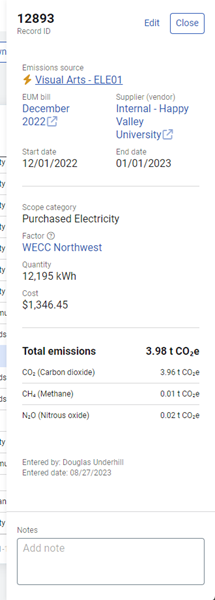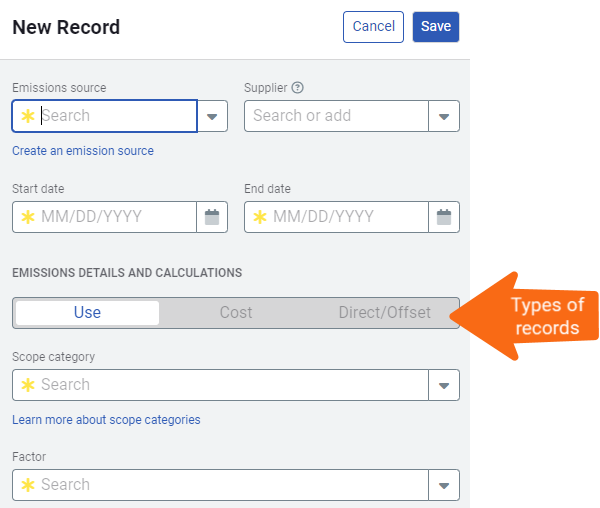Record Overview
A record stores emissions information and values.
The record uses a factor to generate your total quantifiable emissions data. For example, after you enter the amount of natural gas, or the cost of the natural gas, the emissions totals are calculated for you.

Create a record
Records can be entered:
- Individually by manual keyboard entry
- By importing multiple records with spreadsheets
- Generated automatically from bills in EnergyCAP UtilityManagement
- Uploaded multiple records using APIs
Use hashtags in the notes of a record, this lets you filter and search for records by topics that are important to your organization.
Types of Records
Cost
Cost records let you enter the amount spent on a resource or activity and CarbonHub uses cost-based factors to calculate emissions totals.
Use
Calculate emissions based on quantity used of a resource (kWh of electricity) or distance traveled and CarbonHub uses the assigned factors to calculate emissions totals.
Direct/Offset
- Direct
Enter the quantity of CO2e that has been calculated outside of CarbonHub or given to you from a supplier. This only provides the CO2 equivalent not a breakdown of all your emissions data. - Offset
The amount of emissions you avoided that has been calculated outside of CarbonHub or given to you from a supplier.
Learn how you can improve your record accuracy over time.

How are emissions calculated?
The following formula is used to calculate emissions from cost.
Emissions record cost x Conversion rate x GHG factor x Conversion to tCO2e = Total Emissions
Limitations when editing records
When linked to a bill some record elements cannot be edited within CarbonHub and instead must be edited in UtilityManagement.